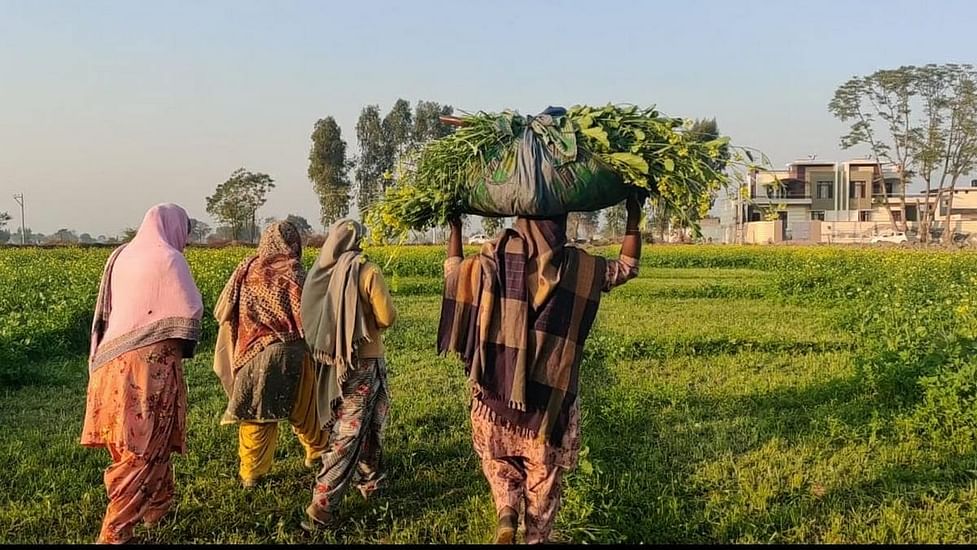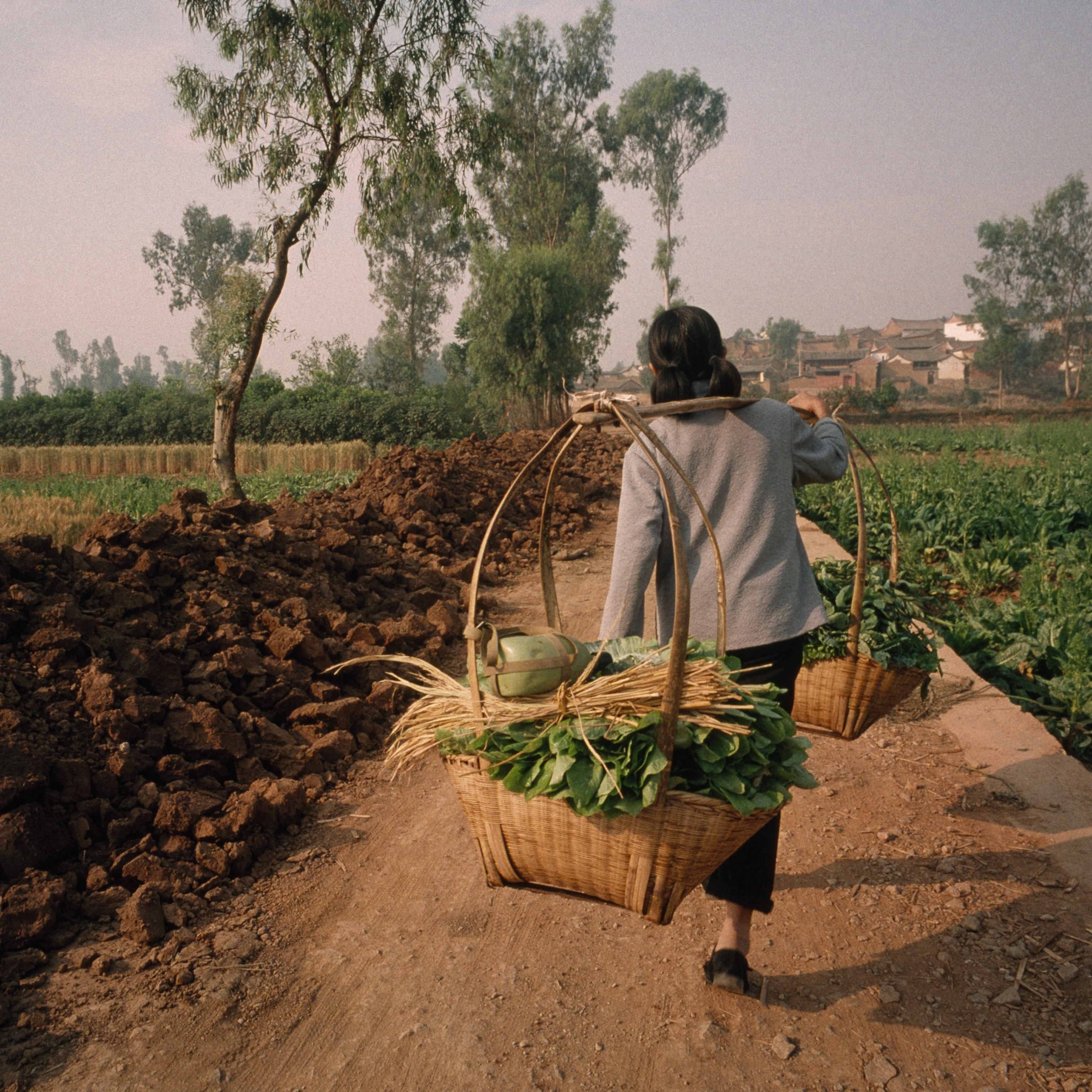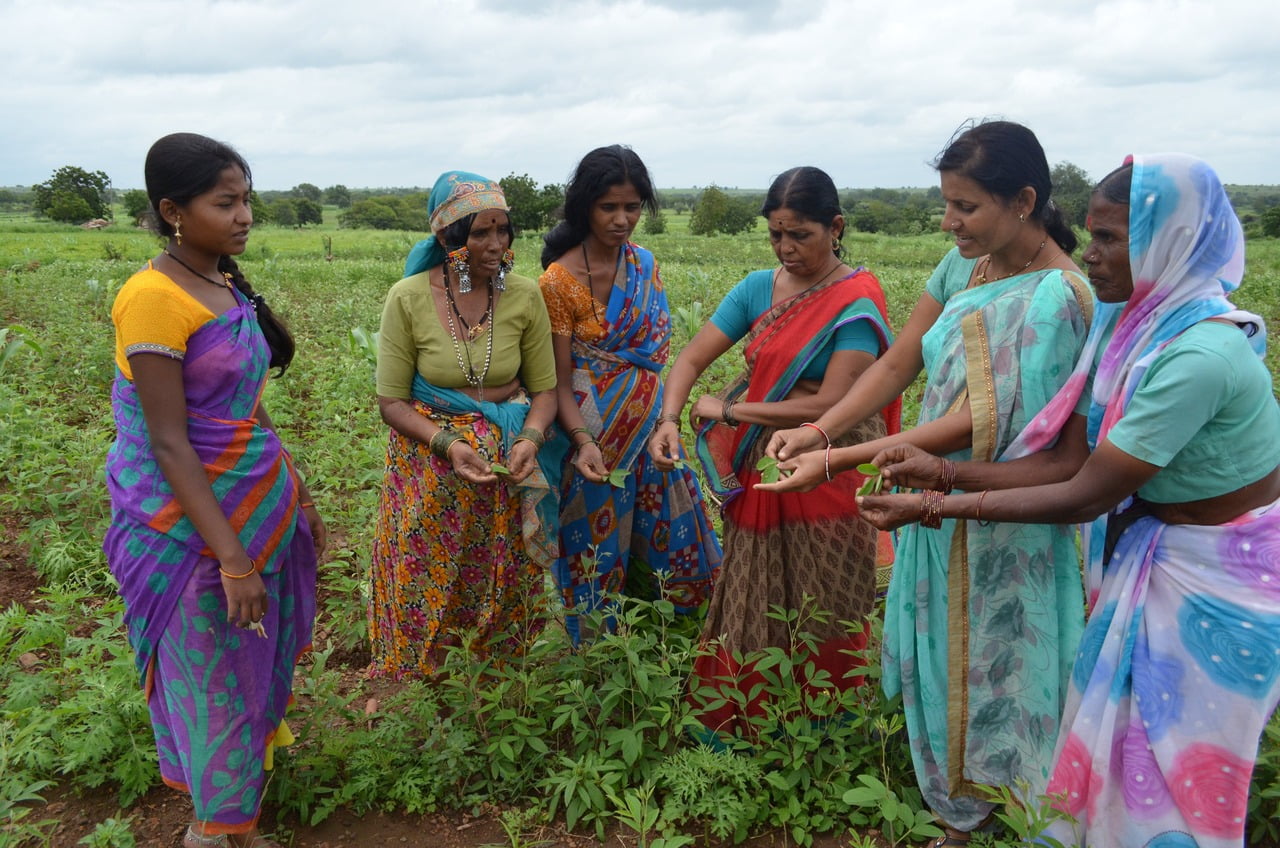Editor’s Note: FII’s #MoodOfTheMonth for July 2022 is Gender and Environment. We invite submissions on the many layers of this theme throughout the month. If you’d like to contribute, kindly refer to our submission guidelines and email your articles to sukanya@feminisminindia.com
Women in agriculture live at the intersection of social, economic, and legal deprivations. This makes them most vulnerable to the devastating effects of climate change. This also makes them among the most resilient, proactive responders to environmental crises, albeit out of necessity. Multiple stories from across India have demonstrated how women can be agents of positive change, leading and bringing about climate change interventions and adaptations.
India’s economy is primarily dependent on agriculture and its responsibilities fall squarely on Indian women, with 71 percent of economically active women being employed in the agriculture sector. Due to the agrarian crisis, more men are migrating to urban areas and giving up farm jobs. This means that the Indian farmlands are increasingly being handed over to women. The Economic Survey 2017-18 calls this the “feminisation” of the agriculture sector.
Along with their greater numbers, female farmers play a crucial role because of their ability to share information at a quick rate. It is easier to mobilise women collectively, and the existing socio-professional support networks like self-help groups (SHGs) or women’s community organisations like the State Rural Livelihood Missions (RLMs) can be leveraged to engage more women and make agriculture-related knowledge more accessible.
Access to information is particularly helpful for the agriculture extension system. Research has found that the participation in an SHG increases women’s access to information and their participation in agricultural decisions, but it does not fully convert into a huge impact on agricultural practices or outcomes in general.
This can be attributed to financial constraints, social norms, women’s domestic responsibilities, and also their lack of influential stance in decision-making. SHGs may help women to be informed, but what does it mean if it cannot be translated to outcomes?
Without land, women do not have autonomy. Without title, female farmers have no access to credit, subsidies, government programs for seeds, irrigation or fertilizers. They cannot get loans and do not invest to improve their yields. Due to the small landholding size, these women farmers are also not able to produce at large scale and harness the benefits of economies of scale. Landlessness also has other grueling consequences including the second-class citizenship of women in India

Women in agriculture: Ownership of land, policy, gender lens
Different interventions have been introduced by government and non-government bodies to reach out to farmers at grassroot levels. One often recalled example is that of the Marathwada region of Maharashtra which saw a sustained period of drought from 2012-2016, resulting in crop failure, groundwater depletion and food insecurity.
The Swayam Shikshan Prayog (SSP) developed a multi-pronged farming approach called the “Women-led climate-resilient farming model” (WCRF) which repositioned women as farmers and knowledge-bearers, enabling them to make informed decisions related to what crops to grow, what to consume and how much to sell. This approach propelled women to practice sustainable agriculture and helped them secure food and income for their households. The success of this approach was manifested in the form of a 25 percent increase in crop yield, leading to good annual savings per household.
One of the other agriculture-based schemes supported by the government is the Agricultural Technology Management Agency (ATMA) scheme which benefits farmers by filling the gaps in technology use. One of its objectives is ,“Tackling the issue of gender concerns by collecting and clustering women farmers into groups and offer them with the advanced training.” The scheme has seen quite many success stories that have been compiled.
These stories talk about social and economic empowerment. But the challenges faced by women farmers are usually multi-fold. The piece-meal interventions may have limited effect until they are institutionalised. One of the most important aspects is ensuring women’s effective participation in decision-making in policy and legal institutions, which is severely curtailed due to the lack of women’s rights over their lands.
More than three-quarters of Indian women sustain their lives as farmers, which is a far higher percentage as compared to men, making agriculture primarily a women’s occupation. Ironically, less than 13 percent of land is owned by women in India. Even for those who do hold land, close to 90 per cent of women-owned landholdings fall in the category of small and marginal landholdings, as per the agri-census 2015-16. Despite passing of the Hindu Succession Act in 2005 which allows daughters to inherit lands, its implementation remains lackluster.
Also read: Seed Conservation By Women Farmers: Spearheading Sustainability And Financial Independence
Ownership and empowerment being intangible effects, it is difficult to exactly quantify them. But they have an interrelationship. Without one’s help, the other’s existence does not make much sense. Gender-blind interventions miss out on specific opportunities and constraints because gender is embedded in almost all aspects. If interventions fail to note and address this linkage of gender in systems, then crucial opportunities for transforming the agricultural systems and increasing productivity may be missed

Without land, women do not have autonomy. Without title, female farmers have no access to credit, subsidies, or government programs for seeds, irrigation, or fertilizers. They cannot get loans and do not invest to improve their yields. Due to the small landholding size, these women farmers are also not able to produce at a large scale and harness the benefits of economies of scale. Landlessness also has other grueling consequences including the second-class citizenship of women in India.
This also prevents women from getting a seat on the table. For e.g., policy changes in the context of irrigation devolution practices increasingly introduced quotas for women’s membership on the executive committee of the Water Users’ Associations. But attempts of participatory irrigation management policies like in Gujarat may only target “landowners” to be members of water users’ associations. Due to lack of land rights, women may only have nominal participation in such committees.
Ownership and empowerment being intangible effects, it is difficult to exactly quantify them. But they have an interrelationship. Without one’s help, the other’s existence does not make much sense. Gender-blind interventions miss out on specific opportunities and constraints because gender is embedded in almost all aspects. If interventions fail to note and address this linkage of gender in systems, then crucial opportunities for transforming the agricultural systems and increasing productivity may be missed.

For this, initiatives which guarantee access to subsidies and financial instruments without requiring land ownership, and enabling an environment sensitive to women’s limited time and capacity to professional responsibilities owing to other domestic ones, are needed. It is also necessary to operate more institutions like farming centers or Swa Bhoomi centers (by Working Group for Women and Land ownership) in Odisha, with women leading them.
Along with these, gender budgeting i.e., budgets sensitive to gender neutral outcomes and focused specifically on women-centric schemes, which were limited to 5 percent in 2020-2021, has to be increased.
All this is important not only for carving out better space for women, but also for changing the landscape of agriculture in the face of climate change. Due of their number, experience, responsibilities and strength, women can be the front runners to lead sustainable adaptation in Indian farm lands. They must be backed with the legal and social infrastructure to claim this power and contribute in crucial decision making processes.
Also read: Farmers’ Protests: The Past And Present Of Peasant Movements In India
Featured Image Source: One Earth
About the author(s)
Shuvangi is an independent writer and researcher based in Kathmandu, Nepal




